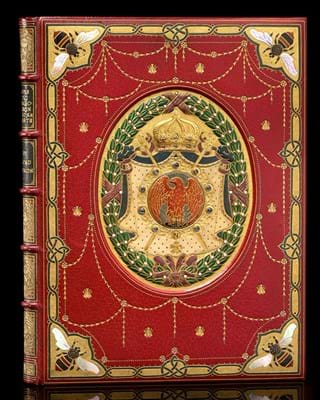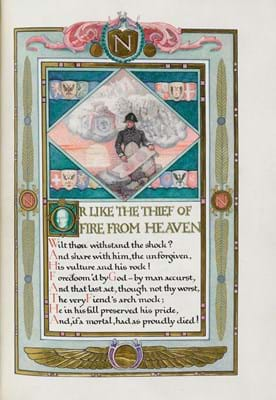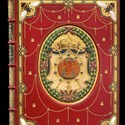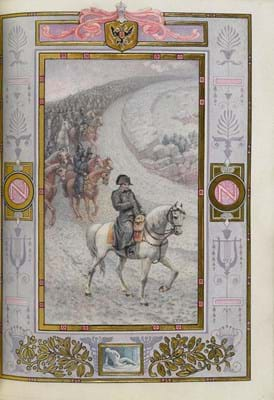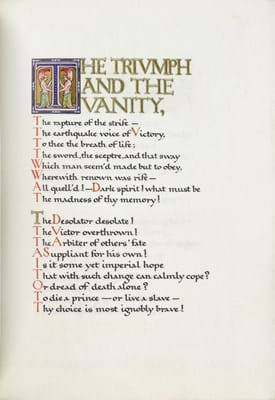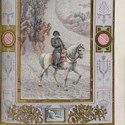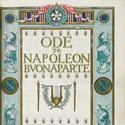While not to everyone’s taste, a rare chance to acquire an example of their work came at a recent sale at Bonhams New York.
It was an illuminated manuscript on vellum of Byron’s ‘Ode to Napoleon’ featuring the work of a Birmingham artist, L Fairfax Murray, whose six miniatures illustrate episodes from Bonaparte’s life.
They include the battles at Wagram, and Marengo, his retreat from Moscow and exile on St Helena. Other leaves boast gold headings, illuminated initials and borders.
On the front of the crushed red levant morocco binding of this large octavo volume are seen the arms of Napoleon, embellished with small pearls, rubies and sapphires, while the laurel wreath surrounding those arms is enriched with 79 tiny pearls. Napoleon’s famous bee device is seen at the corners, highlighted by mother-of-pearl wings.
The lower cover features a central jewelled device incorporating the arms of George Washington, whom Byron references as a successful hero in the last stanza of the poem, which is itself inscribed along the margins. Both front and rear doublures are also richly inlaid and decorated.
No date was given for the binding, but in 1923 it formed part of the Anderson Galleries of New York sale of library of Phoebe AD Boyle of Brooklyn, one which contained an astonishing 45 jewelled bindings by S&S. This time out at the Bonhams auction on June 7, the selling priced was a high estimate $60,000 (£46,510).
No Expense Spared
The most famous of all S&S jewelled bindings rests to this day on the ocean floor, having gone down with the Titanic in 1912.
Commissioned by John Stonehouse of Sotherans, who wanted no expense spared on what he intended to be the greatest binding in the world, it was a spectacular copy of the ‘Rubaiyat Omar Khayyam’ that took two and a half years to complete.
Over 1000, gold set precious stones were used in the decoration of this ‘Peacock’ binding, together with some 5000 individual leather inlays and 100 square feet of gold leaf.
Completed in 1911 and priced at £1000, it was to have gone first to New York for display and potential sale, but difficulties with US customs and other problems saw it sent instead to Sotheby’s, where it sold for just £450 to US dealer Gabriel, whose arrangements for it to be shipped to America ended in a far greater tragedy.
A second copy was produced by S&S following the loss of the Titanic, but that too was destroyed during a bombing raid on London in WWII. A third version survives today in the British Library.


